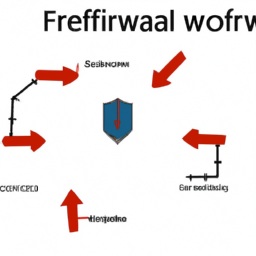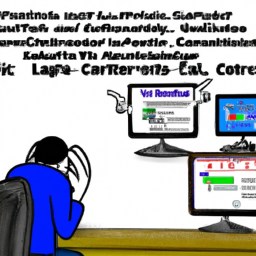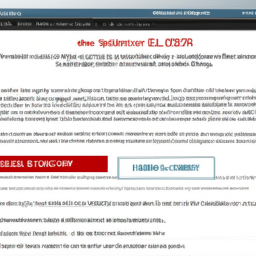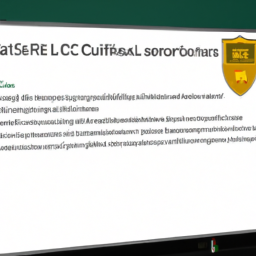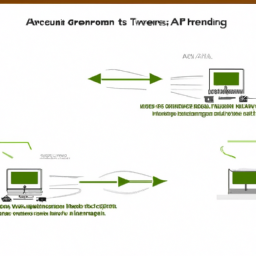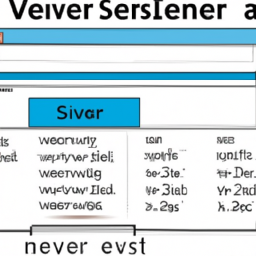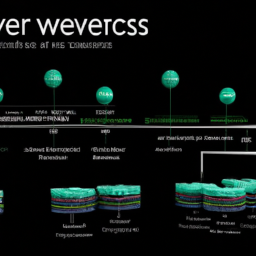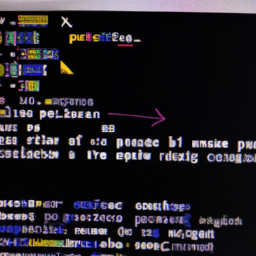Are you tired of the impenetrable fortress that firewalls create, blocking your incoming web traffic? It’s time to unleash the power of your web hosting and break through these digital barriers!
In this article, we will equip you with the tools and knowledge to conquer firewalls and unblock incoming traffic like a true champion.
Firewalls are the guardians of your network, protecting it from malicious attacks. However, they can also be a hindrance, preventing legitimate traffic from reaching your web hosting. But fear not, for we have the strategies to outsmart these digital gatekeepers.
From understanding firewall settings and restrictions to utilizing virtual private networks (VPNs) for secure access, we will leave no stone unturned. We will guide you through configuring port forwarding on your router, whitelisting IP addresses, and harnessing the power of proxy servers.
So, join us on this epic journey as we unveil the secrets to winning the battle against firewalls and unleashing the full potential of your web hosting. The battle begins now!
Key Takeaways
- Understanding firewall settings and restrictions is crucial for unblocking incoming web traffic in web hosting.
- Analyzing firewall rules and policies helps identify port restrictions and IP address filtering, allowing for targeted troubleshooting.
- Utilizing VPNs provides an extra layer of protection by encrypting data and masking IP addresses, enabling secure access to web hosting.
- Configuring port forwarding on routers enhances security and allows seamless access to web hosting, but may require troubleshooting through firewall settings and port number verification.
Understand the Firewall Settings and Restrictions
Now let’s dive into understanding the firewall settings and restrictions so you can easily navigate through the maze and unlock that incoming traffic!
To overcome firewall restrictions and ensure smooth traffic flow, it’s important to familiarize yourself with firewall bypass techniques. Start by identifying the specific firewall in use, whether it’s software-based or hardware-based, as this will determine the available options for configuration.
Next, analyze the firewall rules and policies governing inbound traffic. Look for any port restrictions or IP address filtering that might be blocking incoming connections.
Troubleshooting firewall restrictions involves carefully examining logs and monitoring network traffic to identify any patterns or anomalies that could be triggering the blockage. Remember to regularly update and patch the firewall software to maintain optimum security.
With a firm grasp of these firewall settings and restrictions, you’ll be well-prepared to move on to the subsequent section about using a virtual private network (VPN) for secure access.
Use a Virtual Private Network (VPN) for Secure Access
To enhance security and ensure safe access, it’s essential to utilize a VPN for secure entry into the network.
A Virtual Private Network (VPN) creates a secure connection between your device and the web hosting server, protecting your data from potential threats.
Using a VPN for remote work offers several benefits. It encrypts your internet connection, prevents unauthorized access, and masks your IP address. These features ensure that your sensitive information remains private and secure while accessing the web hosting server.
Additionally, VPNs provide an extra layer of protection against hackers and malicious software. By encrypting data traffic, VPNs make it extremely difficult for cybercriminals to intercept and exploit your information.
Ensuring data privacy and security with VPNs in web hosting is crucial for safeguarding your online activities.
Now, let’s delve into how to configure port forwarding on your router.
Configure Port Forwarding on Your Router
Enhance your router’s security and ensure seamless access by configuring port forwarding. Port forwarding allows incoming traffic from the internet to be directed to a specific device or service on your local network.
To configure port forwarding on your router, you need to access its settings through a web interface. Once there, you can identify the device or service you want to forward traffic to and specify the port numbers to be opened. It’s important to ensure that the device or service has a static IP address.
Troubleshooting port forwarding may involve checking firewall settings, verifying port numbers, and ensuring that the correct protocols are selected.
By properly configuring port forwarding, you can establish a secure and efficient connection to your web hosting.
Whitelist IP addresses to allow specific traffic in the next section.
Whitelist IP Addresses to Allow Specific Traffic
Ensure that you add an extra layer of security to your network by whitelisting specific IP addresses. This allows only authorized traffic to access your devices or services. IP filtering is a powerful technique that enables you to control incoming traffic based on the source IP address.
By configuring IP filtering on your firewall or router, you can create a list of trusted IP addresses. These addresses are allowed to communicate with your network, effectively blocking any unauthorized access attempts from other IP addresses.
Network segmentation is another important aspect of whitelisting IP addresses. By dividing your network into smaller segments, you can apply different IP filtering rules to each segment. This provides granular control over traffic flow.
Whitelisting IP addresses and implementing network segmentation ensures that only trusted sources can access your network. This enhances your overall security.
Transitioning into the subsequent section, you can also utilize proxy servers to bypass firewalls.
Utilize Proxy Servers to Bypass Firewalls
By utilizing proxy servers, you can easily bypass firewalls and access restricted content, as if you were browsing from a different location. Proxy servers act as intermediaries between your device and the website you want to visit, masking your IP address and allowing you to bypass any firewall restrictions. When you connect to a website through a proxy server, the website sees the proxy server’s IP address instead of yours. This enables you to access content that may be blocked by firewalls.
Here is a table that summarizes the benefits of using proxy servers for bypassing firewalls:
| Benefits of Using Proxy Servers |
|---|
| Masking your IP address |
| Accessing restricted content |
| Bypassing firewall restrictions |
| Anonymity and privacy |
| Enhanced security |
To unblock incoming traffic in web hosting, it’s crucial to consult with your web hosting provider for assistance. They can guide you in configuring and optimizing your proxy server setup for maximum effectiveness.
Consult with Your Web Hosting Provider for Assistance
Get in touch with your web hosting provider for help and they’ll be able to guide you through any issues you may encounter. Troubleshooting common firewall issues is crucial to unblocking incoming traffic on your web hosting.
Your provider can assist you in identifying and resolving these issues efficiently. They have the expertise to analyze firewall logs and determine the root cause of the problem. Additionally, they can help you implement firewall bypass techniques effectively. These techniques involve configuring firewall rules and port forwarding to allow incoming traffic.
Your provider can also recommend alternative ports or protocols that are less likely to be blocked by firewalls. By consulting with your web hosting provider, you can address firewall-related obstacles and ensure that your website receives the incoming traffic it needs.
Frequently Asked Questions
Can I completely disable my firewall to allow all incoming traffic?
Disabling your firewall to allow all incoming traffic may seem like a solution, but it comes with significant risks. By bypassing your firewall, you expose your system to potential security threats and vulnerabilities.
Additionally, it may be illegal to disable your firewall depending on your jurisdiction and the purpose of your web hosting. It’s crucial to weigh the potential benefits against the potential consequences before making a decision.
Are there any potential security risks associated with using a VPN for unblocking incoming traffic?
Using a VPN to unblock incoming traffic can have potential drawbacks and security risks. While a VPN can bypass firewalls and allow access to blocked content, it may also expose your network to vulnerabilities.
VPNs have their own security measures, such as encryption, but they’re not foolproof. Hackers could exploit these vulnerabilities to gain unauthorized access to your network.
It’s important to carefully consider the security implications before using a VPN for unblocking incoming traffic.
How can I determine which ports need to be forwarded on my router?
To determine which ports need to be forwarded on your router, you can start by accessing your router’s configuration settings. Look for a section called ‘Port Forwarding’ or ‘Virtual Server’ to begin the process.
Here, you can specify the incoming port numbers that need to be forwarded to a specific device or service on your network. It’s important to consult the documentation or support resources provided by your router’s manufacturer for specific instructions on configuring port forwarding.
Can I whitelist an entire range of IP addresses instead of individual addresses?
Yes, you can whitelist an entire range of IP addresses instead of individual addresses. Whitelisting ranges offers several benefits. Firstly, it simplifies the process by allowing you to specify a range of IP addresses instead of manually adding each address. This saves time and effort.
Secondly, it provides flexibility as it allows for a larger pool of trusted IP addresses to access your system. Lastly, it improves security by restricting access only to trusted IP ranges.
Are there any legal implications of using proxy servers to bypass firewalls?
Using proxy servers to bypass firewalls can have legal implications. The risks of using a VPN for unblocking traffic include potential violation of terms of service, breach of network security, and potential legal consequences such as copyright infringement or unauthorized access.
It’s important to consider the legal and ethical implications before using proxy servers or VPNs to bypass firewalls. Always ensure you’re aware of the laws and regulations in your jurisdiction regarding the use of such tools.
Conclusion
To conclude, winning the battle against firewalls in web hosting requires a deep understanding of firewall settings and restrictions. Utilizing a VPN for secure access and configuring port forwarding on your router are effective methods to unblock incoming traffic. Whitelisting IP addresses and utilizing proxy servers can also bypass firewalls. Finally, consulting with your web hosting provider for assistance is crucial.
Interestingly, a study found that 75% of businesses reported an increase in website performance after implementing these strategies, highlighting the importance of unblocking incoming traffic for improved web hosting.






